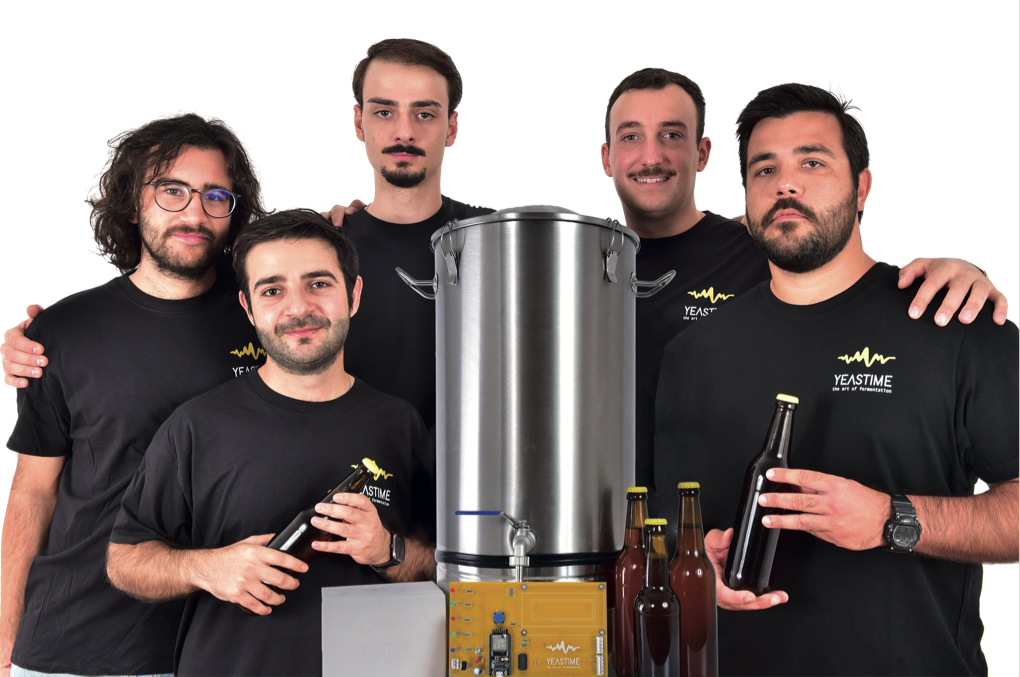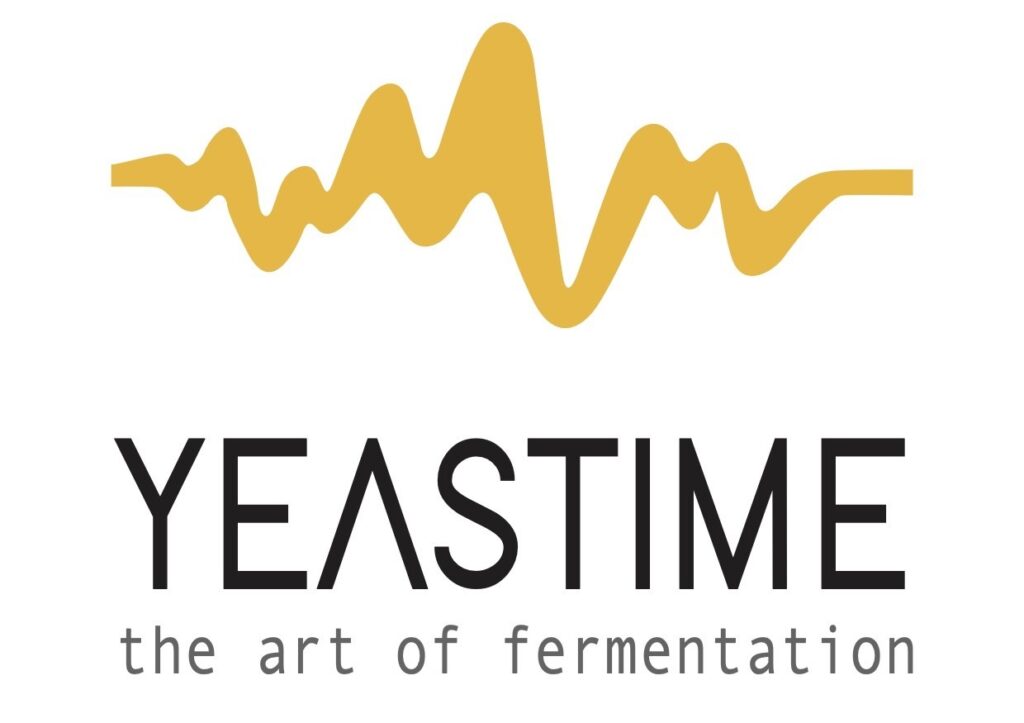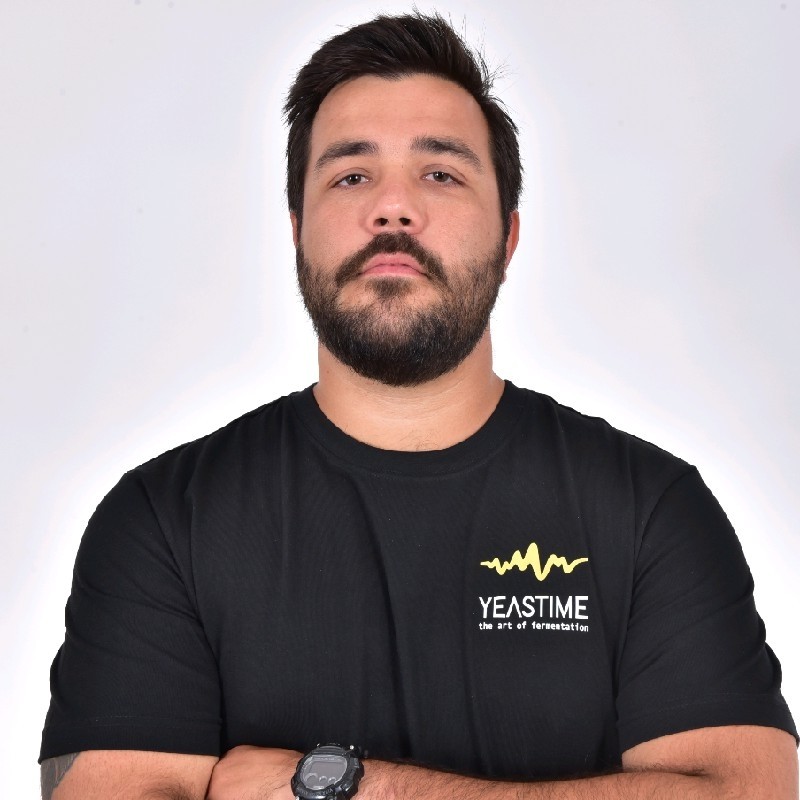Meet Pierfrancesco Mazzolini from Yeastime
Q: Could you briefly introduce yourself and your startup?
A: Sure, I’m Pierfrancesco. I have quite an international background, having been born in Melbourne, Australia, and spending over half my life in South America – in Chile, the Dominican Republic, and Venezuela – due to my father’s diplomatic career. I returned to Italy, my home country, for my education, where I completed a bachelor’s in economics and business and a master’s in international management.
After graduating in 2018, I worked as a digital marketing analyst in the sports industry. During COVID, or just before it, I transitioned from my analyst role to freelance consulting in marketing, primarily for startups and small companies. It was during this period, through an enlightening conversation with my now co-founder, Federico, who has a biotechnology background, that the idea for our startup was born. Federico introduced me to bioacoustics, a fascinating field that blends biology and physics.
Our startup, Yeastime, emerged from this inspiration. We’ve developed and patented a unique technology that uses ultrasounds to aid cell culturing producers. This technology significantly accelerates the fermentation process by up to 30%, offering a more sustainable and cost-effective solution in the industry.
Why Plug and Play?
Q: How did your startup become involved with Plug and Play?
A: Our connection with Plug and Play began through Plug and Play Milan, one of their newer programs. We engaged with them even before formally establishing our startup. Initially, my co-founder Federico and I joined an incubation program in Rome called Dock3. Our goal there was to find a third co-founder who could complement our skills – I focused on economics and marketing, and Federico on science. We needed someone with engineering expertise to develop our hardware.
During this program, we met Alessandro, who became our third co-founder. The manager of Dock3 had strong ties with one of the main contacts at Plug and Play in Milan. Through this connection, we were introduced and encouraged to apply to their program. Interestingly, they suggested we apply not to the Milan program but to the main Plug and Play program in the U.S., specifically in California, which had a more focused track for food and beverage startups. This alignment with our startup’s direction in biotechnology made Plug and Play an ideal accelerator for us.
The Application Process to Plug and Play
Q: Could you describe the application process for Plug and Play?
A: Certainly, the application process was quite standard. We answered the usual application questions about our team’s background, our business model, intellectual property, the technology behind our startup, target markets, and so on. After clearing this initial phase, we moved on to a second stage involving interviews with members and references from Plug and Play. If you get through these interviews, the next step is a final pitch alongside other applicants. I recall there being about 30-40 applicants in this phase. During this final pitch, all of us presented our ideas and projects. From this group, only a select few – around 12-14, if I remember correctly – were chosen to participate in the final program. It was a rigorous and competitive process, but it thoroughly assessed our potential and fit for the program.
Daily Life in the Plug and Play Program
Q: What was a typical day like in the Plug and Play program?
A: The program wasn’t structured on a daily basis, but rather weekly. It had a clear and well-defined roadmap from the start, with each week covering a specific topic. For example, the first week focused on introducing the entrepreneurial mindset, followed by weeks on business modeling, cap tables, business plans, and financial plans. Apart from these thematic workshops, the program also included scheduled networking events, which were a highlight. Given Plug and Play’s reputation and extensive network, they connected us with major corporates and investors. These interactions were incredibly valuable. We participated in one-to-one meetings with investors interested in specific startups and corporates. There were two types of pitch sessions: one where startups pitched to corporates and another where corporates pitched to us. This provided insight into the internal challenges these companies faced, their innovation needs, and the technologies they were interested in. This aspect of the program was particularly engaging and beneficial for us.
Key Takeaways and Milestones from Plug and Play
Q: What were some significant takeaways or milestones from the Plug and Play program that you found particularly valuable?
A: The Plug and Play program was instrumental in several ways for us. One of the major milestones was how it enhanced our pitch structuring and investment readiness. The program went beyond just helping us refine our pitch; it also taught us effective strategies to engage with investors. This involved everything from initial email communications to more structured interactions, like business planning and understanding the investment landscape at the time.
Learning how to effectively value our proposition and deliver our message was incredibly beneficial. Additionally, the program facilitated meaningful conversations with significant companies. For instance, our initial target market was the beer brewing segment, and we had an opportunity to engage with Asahi, a global industry leader. Such contacts are invaluable for startups. Another standout feature was the culmination of the program with a demo day at Plug and Play’s headquarters in Silicon Valley. This was our first visit to California with our startup. The experience of being in Silicon Valley, which is a hub for startups, was not only exciting but also very insightful for our journey. These experiences collectively made the program exceedingly worthwhile for us.
Areas for Improvement in Plug and Play Program
Q: What aspects of the Plug and Play program were underwhelming or didn’t meet your expectations?
A: One area where Plug and Play could improve is in their engagement with startups post-program. After the completion of the program, although we remained within their network, there was a noticeable drop in interaction. We didn’t receive invitations to further networking events or similar opportunities for continued engagement.
Q: Do you still feel connected with Plug and Play?
A: Not quite, especially when I compare it to other programs I’ve been part of. The sustained relationship and continued support that other programs offer have set a different standard, which I feel Plug and Play didn’t quite match post-program.
Plug and Play’s Unique Strengths Compared to Other Accelerators
Q: In your opinion, what does Plug and Play do better than other accelerators?
A: Plug and Play excels notably in leveraging its network. Their ability to connect startups with a broad and influential network is unparalleled. This aspect is likely aided by the sheer number of startups in their ecosystem, which, while it may make ongoing engagement more challenging, also provides a rich and diverse network. This extensive network offers startups a unique and valuable opportunity for connections and growth.
Plug and Play’s Contribution to Yeastime’s Success
Q: Looking at where your startup is currently, would you say Plug and Play has played a significant role in your success?
A: Absolutely, Plug and Play, along with other programs, has been instrumental in our journey. They provided us with the right tools to stay on track with our startup roadmap and to have clear, focused objectives. One of the key benefits was learning how to effectively present and deliver our message, which in turn improved our product sales. Additionally, the program enabled us to directly engage with relevant stakeholders and other successful startup founders. This exposure to their experiences and advice was incredibly valuable. The opportunity to hear testimonies and receive guidance from those who have navigated similar paths has been a crucial part of our growth and development.
Plug and Play’s Role in Preparing for Future Milestones
Q: Do you feel that Plug and Play has prepared you for your upcoming milestones, or are they supporting you in your current endeavors?
A: Currently, Plug and Play is not actively involved in our next steps. We’ve recently received financial support from another accelerator program, Big Ideas Venture, which we engaged with following an investment last July. Our primary focus and interaction are now with them.
However, reflecting on the overall experience, I definitely recommend Plug and Play as a program. It equipped us with numerous tools, significantly expanded our network, and facilitated engagements not just with investors but also with corporates and other startups. Connecting with other founders who are on a similar path has been incredibly beneficial. While Plug and Play might not be directly involved in our current phase, the foundation they helped build continues to be a valuable asset.
Advice for Aspiring Participants in Plug and Play or Similar Programs
Q: As we conclude, do you have any final advice for those looking to apply to Plug and Play or similar accelerator programs?
A: My key piece of advice, especially for early-stage startups, is to focus on building the best team possible. It’s crucial to have a deep understanding of your industry, market, and the technology you are developing. Aim to create a multidisciplinary team where the complementarity of skills and competencies is a priority. Having a team with diverse expertise and perspectives is one of the most valuable assets you can have from the start. It not only positions your startup for success but also enhances your potential for success throughout your entrepreneurial journey. This foundational strength is vital for making the most out of accelerator programs like Plug and Play.



